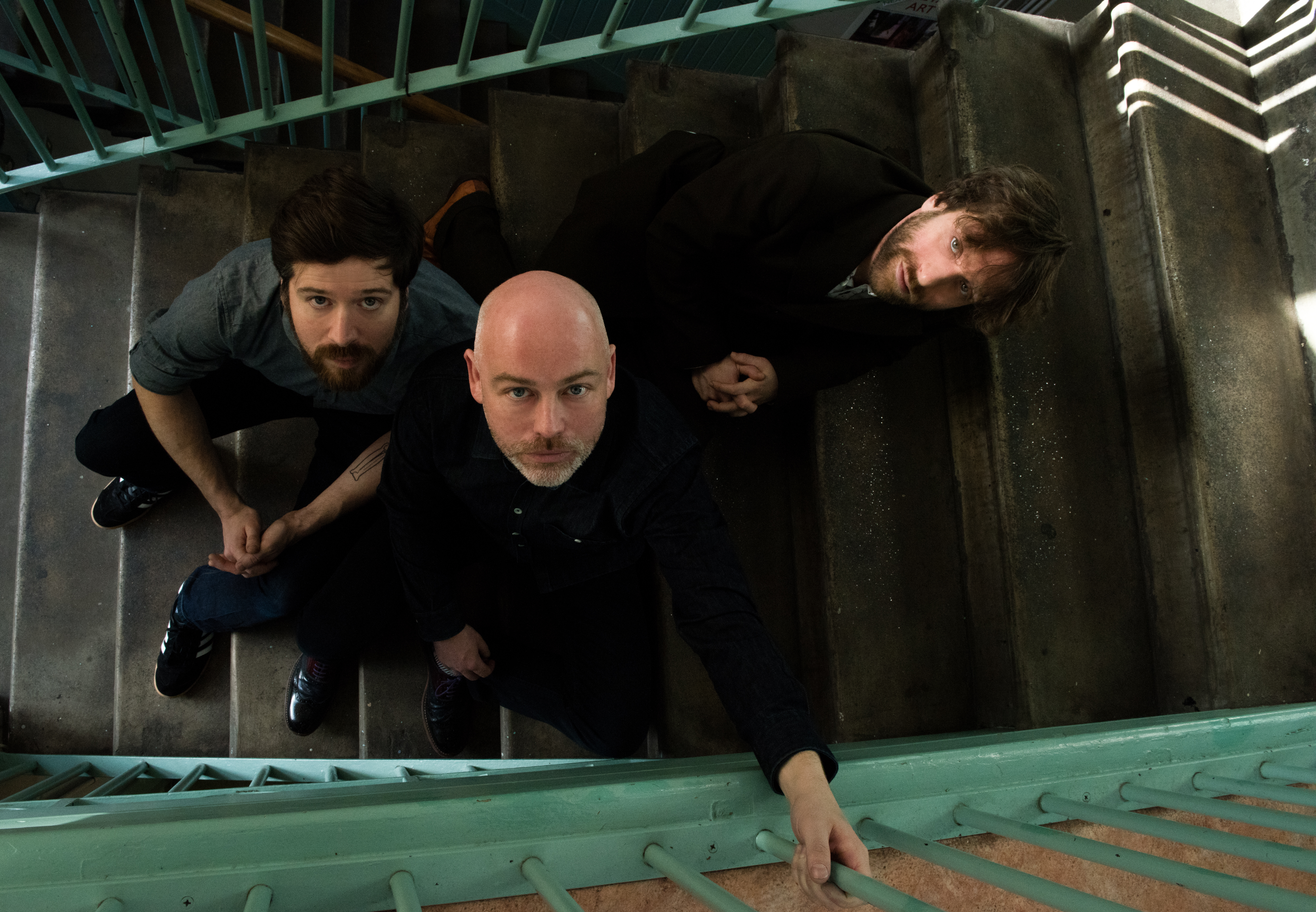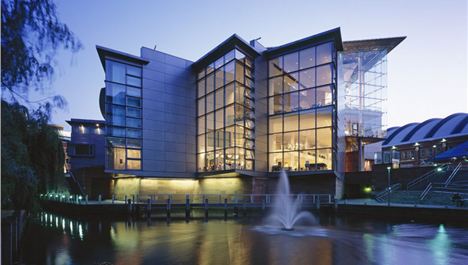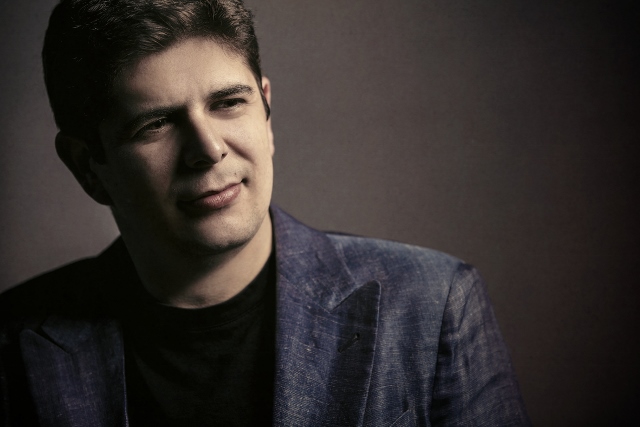“In a way it’s been quite exciting to keep getting asked if calling this album Midnight and Closedown means it’s going to be our last album,” says guitarist and singer Kris Drever, one third of the multi-award winning folk-and-far-beyond trio Lau, along with Martin Green (accordion, piano, electronics) and Aidan O’Rourke (fiddle).
“But no, it isn’t, and we weren’t being mischievous either. The title is a reference to the shipping forecast as the album itself is very much about our island and maybe our increasing island mentality. The songs on this album are about big islands and little islands and human islands. We have made a series of ideas into little ships and planes and we’re hoping they’ll land on other islands.”
O’Rourke adds: “We wanted to make a Brexit album in the sense that our collective future is hazy, but the themes seemed vivid and swirling. In the track She Put On Her Headphones, music becomes an escape, another haven. But how much should we allow ourselves solace, how much should we force ourselves to confront? We celebrated our tenth anniversary last year. It seemed like the end of a cycle, the culmination of a clear musical trajectory. This album is a synthesis of all the stylistic elements we’ve arrived at after ten beautiful years together. In that sense it’s a state of the Lau nation, but it’s also a question. What comes next, for us musically and for the society we live in?”
Appropriately for such an ambitious approach, Midnight and Closedown, produced by John Parish (P.J. Harvey, Sparklehorse), is quite possibly the best album of the year so far, a bold, progressive and engrossing leap forward even for a band who have consistently pushed at the boundaries of modern folk music with each successive release, curation and concert tour. The music made by Lau is a long way from most of the clichéd notions of folk music, but firmly rooted nonetheless in the traditional music that brought together three of the UK’s finest folk artists.
 “We knew each other from different music sessions, trad festivals, gigs and so on,” Drever remembers. “We were playing together in three separate duos, writing what we thought of as new music in the trad idiom. Ultimately it seemed like a time-saver to make one trio and focus on pooling those compositions.
“We knew each other from different music sessions, trad festivals, gigs and so on,” Drever remembers. “We were playing together in three separate duos, writing what we thought of as new music in the trad idiom. Ultimately it seemed like a time-saver to make one trio and focus on pooling those compositions.
“We all come from similar backgrounds in terms of playing repertoire, so the big names of traditional Irish music like Planxty, Bothy Band and so forth, plus Scottish bands like Capercaillie and The Easy Club were influences, of course. Outside of the instrumentalist mindset it all gets broader and murkier – Cream, Aphex Twin, Amon Tobin, Paul Simon, Kyuss. We’re a listening band and the van journeys are pretty constant sessions of introducing one another to new things. But for progress to be meaningful, we have to care about where we’ve come from.”
When it comes to writing new material, there’s “usually, there’s a spark or a device that sets us off. Then it’s a permutations game. ‘Have we tried everything?’ We’ll just keep ploughing away until something moves us. The desire not to repeat ourselves is strong. When you love something as complex and as vast as music it’s endlessly thrilling. Why stand still?”
 Which is pretty fantastic when it comes to actually listening to Lau live or any of the recorded music they’ve released since 2005. But it’s a bit of a bugger, proverbially speaking, when it comes to trying to convey the magnificent joys of more than a decade of live and recorded music resplendent with unexpected collaborations and innovative ideas.
Which is pretty fantastic when it comes to actually listening to Lau live or any of the recorded music they’ve released since 2005. But it’s a bit of a bugger, proverbially speaking, when it comes to trying to convey the magnificent joys of more than a decade of live and recorded music resplendent with unexpected collaborations and innovative ideas.
“You’re right, we have no ‘elevator pitch’,” Drever laughs. “That’s why something like winning those BBC Radio 2 Folk Awards [they’ve won no less than four Best Group gongs, quite apart from their individual awards and nominations] has been really useful professionally, especially abroad. It’s like someone people trust vouching for you.”
They all spend a substantial amount of time working with other artists but Drever firmly believes that “it feeds the project to have those other things going on. Becoming a different musician through working with different people and being involved with projects that have different remits means that when we three come back together to make music, we aren’t the same musicians that we were the last time, which makes it much easier to generate something new.”
Green agrees. “Every time Lau return to the studio, we are a different little unit. Musically a three-piece band is wonderful thing. A triangle is a powerful shape, you can tilt it and turn it and, any way up, whichever is its highest point will always be supported and grounded by two points beneath. Lau have made much use of this ‘power of three’ over the years.
 “But three is small, and that can be insular. So, we always take a fourth and in recent years a fourth we don’t know very well except through their music, which is tremendously exciting. This time the fourth person was the legendary John Parish. Our job as we see it is to pass over to John the music as we have been playing it, and his is to mould and shape it as his ear guides him. He has made a Lau album that only he could make.”
“But three is small, and that can be insular. So, we always take a fourth and in recent years a fourth we don’t know very well except through their music, which is tremendously exciting. This time the fourth person was the legendary John Parish. Our job as we see it is to pass over to John the music as we have been playing it, and his is to mould and shape it as his ear guides him. He has made a Lau album that only he could make.”
Drever says: “Obviously Lau are grown-ups and we’ve made maybe 100 records between us, so we could make a record without a producer. But there’s something about having that other person there who’s got a little bit of distance from the project that seems to really help all of us mentally and I’m sure artistically as well.”
“We try to not shout,” concludes O’Rourke. “We try to listen to each other, to enjoy the stylistic differences we’ve each grown into. As a trio we don’t have to synthesize. We can recognise the vibrancy in our diversity, and we can love our common ground.”
Images © Genevieve Stevenson
 Lau will be playing at Leeds City Varieties (February 26); The Met, Bury (February 27); and The Crescent, York (June 5). Midnight and Closedown is out now.
Lau will be playing at Leeds City Varieties (February 26); The Met, Bury (February 27); and The Crescent, York (June 5). Midnight and Closedown is out now.











